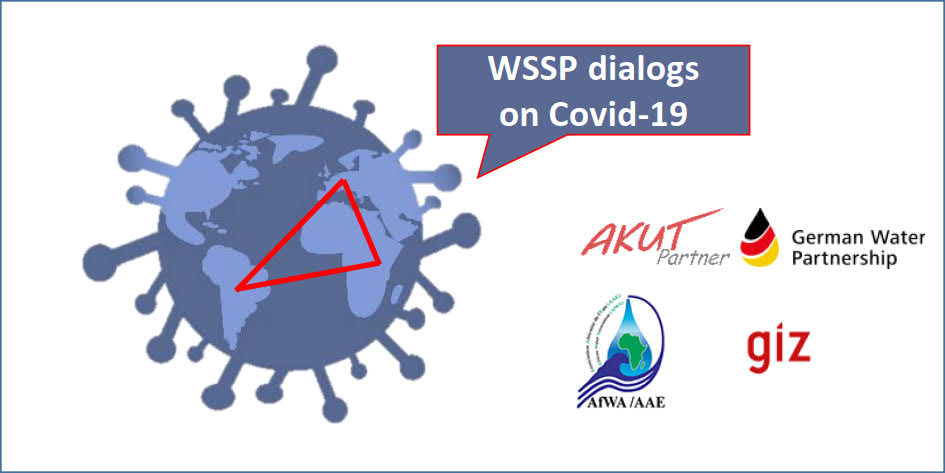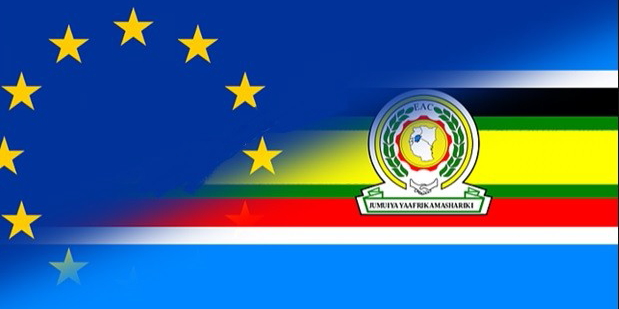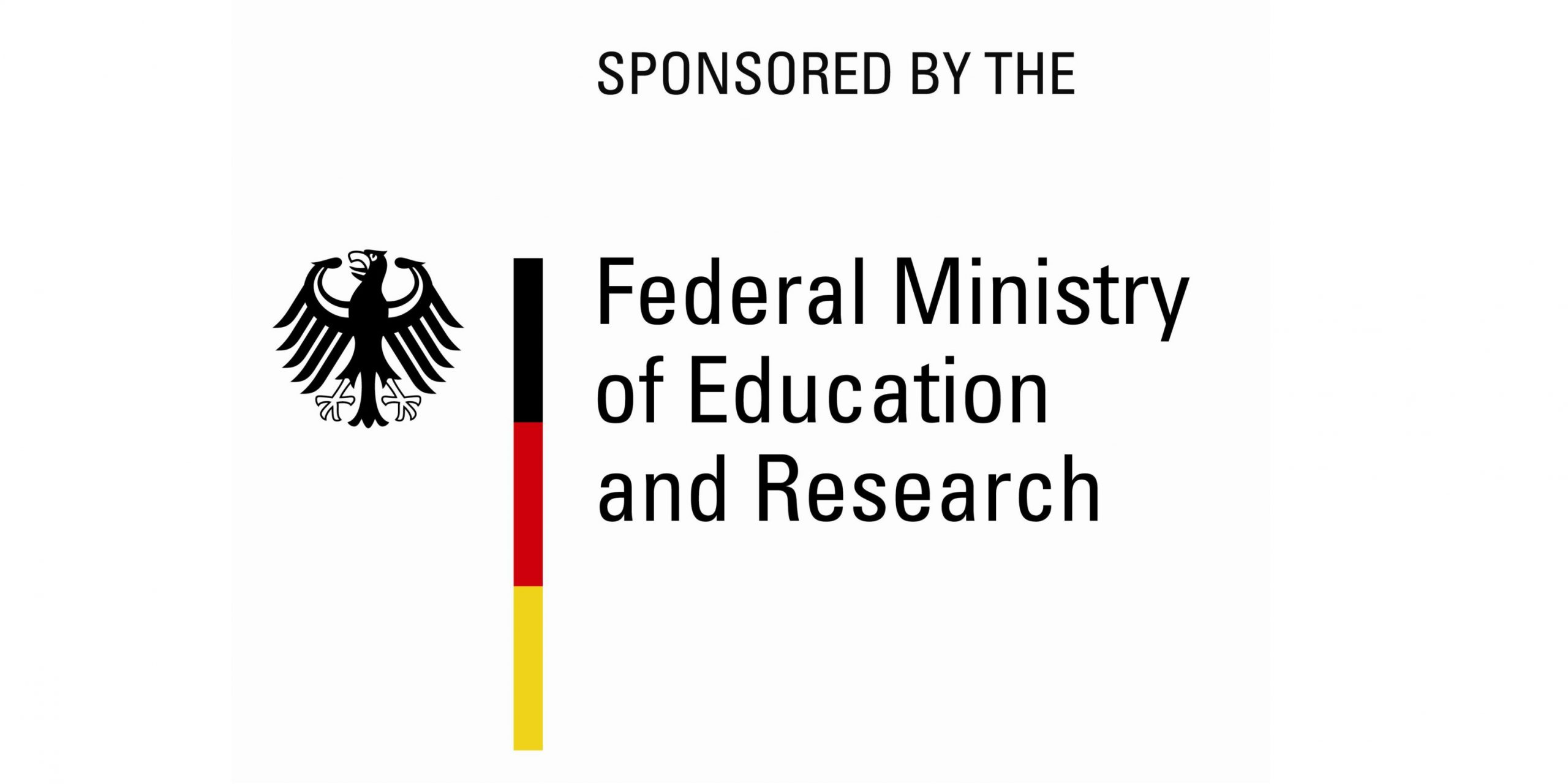

"Am Palmsberg" WWTP (40,000 p.e.) Denitrification stage optimized and energy saved
Project start "Lake Victoria Basin Integrated Water Resources Management"
International Covid-19 dialogs held with WSSPs
Since the spread of Covid-19 worldwide it has become one of the few certainties that meeting hygienic standards is one of the most effective forms of prevention. Thus, for users of water and sanitation services, the continuity of water supply becomes more than ever a major public health issue. But the pandemic puts Water Supply and Sanitation Providers (WSSPs) at risk and challenges.
AKUT has a vast experience in international cooperation in Latin America, where it has worked on projects in cooperation with GIZ (Deutsche Gesellschaft für Internationale Zusammenarbeit) consulting for WSSPs. Recently, AKUT has opened a new office in Kampala, Uganda, where it is expanding its activity also in Africa. Therefore, AKUT decided to support the WSSPs in this challenge of the Covid-19 pandemic.
Our initiative of knowledge exchange through Webinars in response to the pandemic for WSSPs has already been carried out in Brazil, Peru and Bolivia. These webinars are part of the ongoing GIZ activities. AKUTs Latin American experiences have inspired our Kampala office. The African continent has been able to benefit from these webinars too thanks to the cooperation between GWP (German Water Partnership), AfWA (African Water Association) and BMZ (Bundesministerium für wirtschaftliche Zusammenarbeit und Entwicklung).
The webinars aim to present concrete measures and good practices in the face of the Covid-19 pandemic in a practical way. Speakers from WSSPs present their practical experience and through the final question and answer session a beneficial exchange of knowledge is achieved between all participants of the webinar. Some sessions have had simultaneous translation on two channels for the presentations of foreigners. The sessions are recorded and participants receive a draft pandemic response plan document along with the presentations made so that knowledge and lessons learned can be disseminated.
Our initiative has brought the necessary tools for WSSPs to respond effectively to the pandemic, protecting their employees and ensuring the continuity of their services. The success of these webinars is a result from close cooperation between all parties in the sector. We hope that the high level of motivation and cooperation shown will lead to a rapid response in the water and sanitation sector to the challenge of the pandemic globally.
For further information on Webinars and support in this matter contact: Romas Radtke.

International Covid-19 dialogs held with WSSPs
Mobile TOC measuring station for process optimization
Project start "Lake Victoria Basin Integrated Water Resources Management"
In the presence of the Secretary General for the East African Community (EAC), Liberat Mfumukeko, the starting signal for an integrated water resources management programme in the Lake Victoria catchment area was given on 14 February 2020 in Kisumu, Kenya. The project, coordinated by the Lake Victoria Basin Commission (LVBC), is funded by the German Federal Ministry for Economic Cooperation and Development (BMZ) and the EU.
A joint venture of the companies Consulting Engineers Salzgitter (CES), AKUT Umweltschutz Ingenieure Burkard und Partner and MIBP Consulting Engineers as Project Implementation Consultant (PIC) was commissioned to implement Lot 2 of this programme. In this context, AKUT is responsible for the management of the High Priority Investment (HPI) “Kampala Nakivubo Channel”. The Kreditanstalt für Wiederaufbau (KfW) is responsible for the contract.
Expectations for the multisectoral project with a total volume of EUR 31.9 million (duration until February 2023) are high because the development of Lake Victoria, the second largest freshwater reservoir in the world, is highly alarming in terms of water quality, biodiversity and climate change impacts. Locating the project under the umbrella of the multilateral EAC supports regional cooperation in the region. By developing a “Water Framework Directive” – here following the European approach – the programme aims to reverse the recent negative trend and instead achieve “significant improvements” in water quality. More than 45 million people will benefit from this. To this end, new regulatory standards for discharge parameters are to be developed. In four “High Priority Investment Projects” in Kisumu (Kenya), Kampala (Uganda), Mwanza (Tanzania) and Kigali (Rwanda) concrete measures are planned which promise a considerable reduction of inflowing COD, nutrient and pollutant loads into the lake. One goal is also to develop new site-specific solutions/ technologies on a model basis, which can be implemented in the medium term at other locations in the Lake Victoria catchment area.
AKUT will focus on planning and implementing measures around the Nakivubo Channel, the largest discharger from the Kampala metropolitan region into the Inner Murchison Bay of Lake Victoria. In this context, a feasibility study for a constructed wetland for the treatment of 45,000 m³/day (both sewer water and sewage treatment plant effluent) will be examined and updated. Other variants and process combinations are also being examined in order to implement selected solutions in the next step.
In February 2020 AKUT opened a new branch office in Kampala, Uganda. Since 2005, AKUT has been continuously present with various projects in East and South Africa. With the office in Kampala, AKUT now has its first independent presence on the African continent. This is in connection with an expansion of the activities in the East African region. Our many years of experience in advising water and wastewater utilities are also in increasing demand in East Africa.
The expertise of AKUT lies in the development of locally adapted technological concepts (constructed wetlands, retention soil filters, small wastewater treatment plants, clarification ponds, SBR systems, novel sanitation systems ECOSAN, water loss reduction, measures for surface water remediation, renaturation, biogas plants, renewable energies, agricultural irrigation, multisectoral Nexus programmes) as well as in institutional consulting (development cooperation, SDG achievement, consulting on water tariff systems, capacity building, support in organisational development, social environment management, etc.). AKUT acts in a network with international and local partners.
At this year’s AfWA ICE 2020 (African Water Association International Congress and Exhibition) from 24th to 27th February in Kampala, AKUT can be found on the joint stand of the German Water Partnership (GWP) in Hall 1, B7-B8 & C14-C15. We are looking forward to your visit.
Contact: Romas Radtke
Press release: Programme-Launch.pdf

Project start "Lake Victoria Basin Integrated Water Resources Management"
Retention soil filters for urban waters in China
Mobile TOC measuring station for process optimization
Development of a wastewater switch for the energy-efficient selective partial flow treatment of highly concentrated wastewater (ESTA) at municipal wastewater treatment plants
The research association ESTA is a merger of AKUT Umweltschutz Ingenieure Burkard und Partner, the Technical University of Berlin, FG Siedlungswasserwirtschaft and LAR Process Analysers AG. The aim was the development of an intelligent wastewater switch in the inflow of municipal sewage treatment plants for the separation of highly charged inflows and energy recovery by means of anaerobic treatment. The joint project “ESTA (FKZ 02WQ1382A-C)” was funded by the Federal Ministry of Education and Research (BMBF) within the framework of the SME-innovativ funding initiative.
As a result, peak inflow concentrations could be identified and evaluated with a time resolution of 6 minutes with regard to height and frequency in order to activate the wastewater diverter.
A successful operation of the wastewater switch and the anaerobic test reactor was possible despite the low peak concentrations and the low number of shock loads on the investigated wastewater treatment plant in combination with excess sludge. The simulation of the wastewater treatment plant showed that, despite the removal of the highly charged wastewater fraction and despite changes in the C:N ratio, the statutory monitoring values can be complied with under the underlying conditions (in particular the low ammonium inflow values). A maximum degree of electrical self-sufficiency of 75 % could be achieved.
A central component of the project was the construction and operation of a test plant at the Baruth (Brandenburg) sewage treatment plant, which was planned and installed in coordination with the project partners TU Berlin and AKUT. The project partner LAR was mainly responsible for the development of an adapted online analysis technology. Project start was 01.10.2016, project end was 31.03.2019.
With the help of the TOC-Online monitor a mechanism was controlled, which feeds inlet water of the sewage treatment plant to an anaerobic reactor from an adjustable threshold concentration. Both the analysed feed concentrations, the volume flows and loads fed into the reactor and the biogas produced in the reactor were evaluated.
Due to the implementation of the TOC online monitor on a trailer, the measuring equipment is now also available for mobile use. Measurement campaigns at other sewage treatment plants and at two industrial sites prove the operational capability. The basic load could be clearly determined and the concentration peaks could be evaluated with regard to height and frequency. It was possible to define threshold values in concentration and volume of an impact load which makes the investigation of a general conversion of the process with separate anaerobic sludge treatment useful.
“Although the Baruth wastewater treatment plant under investigation with the evaluated impact loads is below the threshold values determined and a further investigation does not appear to be appropriate here, the results of the other sites investigated certainly show potential”, explains project coordinator Dipl. Ing. Thilo Burkard (AKUT).
The participating project partners are accordingly optimistic that the new concept can be applied to new construction and conversion of wastewater treatment plants. A measurement campaign with the mobile measuring device is therefore planned for other wastewater treatment plants.
Further information: Thilo Burkard